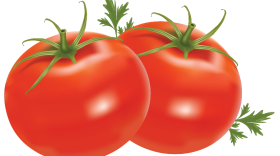Greetings, HPPR Radio Readers. I’m Meagan Zampieri, the book discussion leader for The Food of a Younger Land , the first book in our 2017 Fall Read – Food and Story. Actually the full title of the book is The Food of a Younger Land - A portrait of American food--before the national highway system, before chain restaurants, and before frozen food, when the nation's food was seasonal, regional, and traditional--from the lost WPA files. As I read the book, I couldn’t help thinking about the ways in which we talk about food.
You see, I think that arguing about food is an American pastime. I suppose it could be said that arguing is an American pastime, and since so much of our existence is centered around food, this is a natural progression.
“MY grandmother makes the best strawberry shortcake.”
“MY chicken wings are better than you’ll have at any pub.”
“Well, you haven’t had MY pot roast.”
Food of the Younger Land was edited by Mark Kurlansky and published in 2009. It began as America Eats, one of the Federal Writers’ Projects in the New Deal. The book is organized first by region, then by state. Each essay is introduced by Kurlansky with some brief author info, maybe some historical context—sometimes these are the most interesting bits.
Kurlansky (appropriately) lumps all the clam stories together, and the authors don’t disappoint. The argument of whether clam chowder has a tomato or milk base, I learned, starts with the very idea of whether or not one should eat tomatoes at all. Most people thought they were poisonous.
Let me tell you. Eat tomatoes. But only in the summer, and only from someone’s garden. Buy them from a roadside stand or the farmers’ market. Cherry and grape tomatoes are occasionally fine from the grocery store, and a can of crushed are fine for a sauce of course. But slicing tomatoes aren’t just better from the vine from July through August; their very edibility otherwise is questionable.
My granpa grew tomatoes.
One year, after Gramma had grown tired of staying home for the tomatoes and tomato customers, exhausted from hosting Granpa’s sister from 4 o’clock each morning for watering and weeding, she implored him to lay off—to plant a smaller crop.
He purchased 1,500 plants that year - sold most of them, planted 600.
Cherries and heirlooms, Big Beefs, yellows, and purples. So many kinds I can’t remember them all. Every summer, the big, beautiful toms would be sliced and salted on the table, and dozens a day would be sold to people who understood flavor, and dozens more would be blanched, peeled, and frozen for later.
Year after year, this argument continued, and sometime after his 90th birthday, Granpa planted once more, then grew ill and died. His sister kept on top of the weeds and watering, and the rest of the family took home all the fruits of her labor. Gramma could never have eaten so many. She was allergic.







